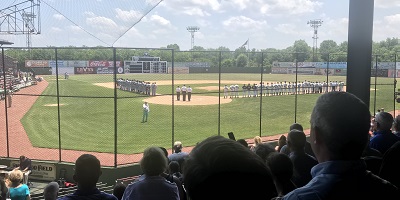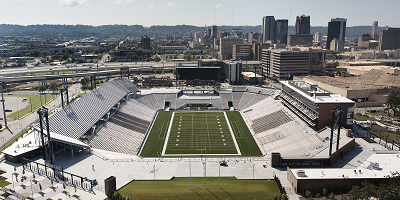Sixteenth Street Baptist Church
Organized in 1873, Sixteenth Street Baptist Church was the “First Colored Baptist Church of Birmingham, Alabama.” Initially, the congregation worshiped in a small building on the corner of 12th Street North and 4th Avenue and later moved to 3rd Avenue North between 19th and 20th Streets. The congregation then moved to its present location at 16th Street and 6th Avenue North.
Due to Sixteenth Street’s prominence in the black community and its central location to downtown Birmingham, the church served as headquarters for the civil rights mass meetings and rallies in the early 1960s. It was a place for black men, women and children to come and receive strength and protection during the movement of desegregation in the city.
The Sixteenth Street Baptist church became known around the world when a bomb exploded on Sunday, Sept. 15, 1963, at 10:22 a.m., killing four young girls attending Sunday school and injuring more than 20 other members of the congregation.
With the outpouring of generosity, sympathy and financial contributions, the church was able to restore the damaged building and reopen for services Sunday, June 7, 1964. As a memorial gift from the people of Wales, the church was given a large stained-glass window of the image of a Black crucified Christ. Today, it sits in the rear center of the sanctuary at the level of the balcony.
The church remains active today and is open for worship, visits and tours. The church is a member of the Alabama African American Civil Rights Heritage Sites Consortium, the National Park Civil Rights Monument of Birmingham and the National Civil Right Trail.
Learn more about Sixteenth Street Baptist Church
Birmingham Civil Rights Institute
Reaching more than 150,000 individuals each year through a multitude of programs and services, the Birmingham Civil Rights Institute’s mission is to to enlighten each generation about civil and human rights by exploring our common past and working together in the present to build a better future.
The Institute stands at the corner of Sixteenth Street and Sixth Avenue North, the anchor in Birmingham’s Civil Rights District. The state-of-the-art facility offers 58,000 square feet of archives, galleries, meeting rooms and changing exhibition spaces. Permanent exhibits include the Orientation Theatre, the Human Rights Gallery, the Movement Gallery, the Confrontation Gallery, the Milestones Gallery and the Barriers Gallery. The exhibits feature photographs, sound bites, artifacts and theatrical depictions of seminal moments of the civil rights movement.
The BCRI is part of the Birmingham Civil Rights National Monument and an affiliate of the Smithsonian Institution.
Learn more about the Birmingham Civil Rights Institute
Kelly Ingram Park
Kelly Ingram Park is a public park that is home to several pieces of sculpture related to and representing the civil rights movement. The park was named in 1932 after a local firefighter, Osmond Kelly Ingram, who was the first sailor in the United States Navy to be killed in World War I.
In 1963, civil rights demonstrators, many of whom were children, were attacked by law enforcement in the streets bordering the park. The violence raised a nationwide public outcry and hastened integration in Birmingham.
The Park was completely renovated and rededicated in 1992 as "A Place of Revolution and Reconciliation" to coincide with the opening of the Birmingham Civil Rights Institute, an interpretive museum and research center, which adjoins the park to the west.
Today, you can visit the park and learn of the rich history and the significance of each sculpture through an audio tour accessible on your mobile device.





 To exercise your privacy choices,
To exercise your privacy choices,